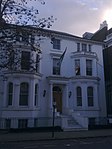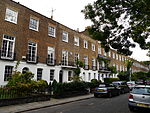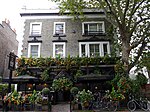Commonwealth Education Trust
1958 establishments in the United KingdomCommonwealth FamilyCultural and educational buildings in LondonEducational charities based in the United KingdomGrade II* listed buildings in the Royal Borough of Kensington and Chelsea ... and 6 more
Grade II* listed museum buildingsGrade II* listed office buildingsHistory of the Royal Borough of Kensington and ChelseaHolland ParkOffice buildings in LondonUse British English from August 2015

The Commonwealth Education Trust is a registered charity established in 2007 as the successor trust to the Commonwealth Institute. The trust focuses on primary and secondary education and the training of teachers and invests on educational products and services to achieve both a beneficial and a financial reward to fund future charitable initiatives.
Excerpt from the Wikipedia article Commonwealth Education Trust (License: CC BY-SA 3.0, Authors, Images).Commonwealth Education Trust
Kensington High Street, London Earl's Court (Royal Borough of Kensington and Chelsea)
Geographical coordinates (GPS) Address Phone number Website Nearby Places Show on map
Geographical coordinates (GPS)
| Latitude | Longitude |
|---|---|
| N 51.49986 ° | E -0.20018 ° |
Address
Design Museum
Kensington High Street 224-238
W8 6AG London, Earl's Court (Royal Borough of Kensington and Chelsea)
England, United Kingdom
Open on Google Maps











